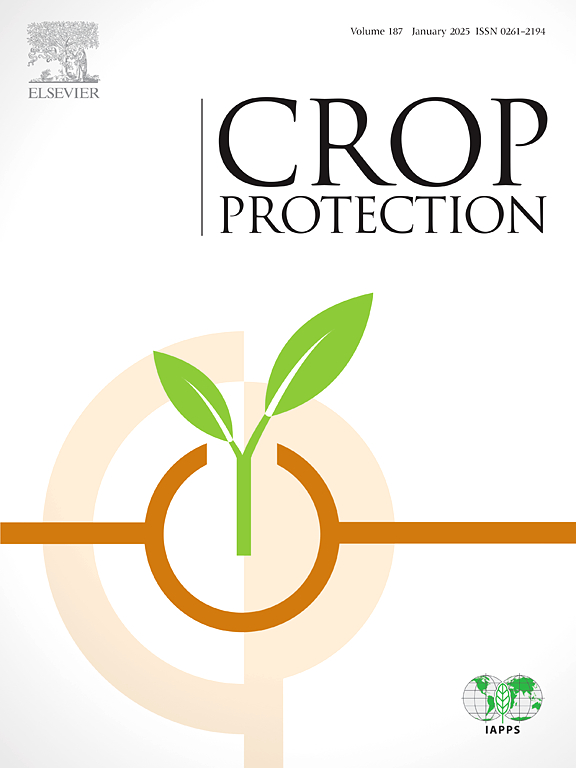Trichoderma atroviride LR28 as a potential biocontrol agent against Thecaphora frezzii and inductor of biochemical responses in peanut
IF 2.5
2区 农林科学
Q1 AGRONOMY
引用次数: 0
Abstract
Peanut smut (caused by the pathogenic fungi Thecaphora frezzii) is one of the most relevant diseases regarding peanut (Arachis hypogaea L.) productivity in Argentina. Cultural strategies have not been successful in controlling the disease. Chemical strategies are the ones that offer acceptable control, but they have low adoption rates and erratic effects. To find a biocontroller that offers a low environmental and economic cost control strategy, we assessed the antagonistic capacity of 14 Trichoderma isolates against T. frezzii. We selected the four with the highest antagonistic effect in vitro and tested them in pot and field assays. A principal component analysis highlighted the LR28 strain as the most effective biocontrol agent. We molecularly identified LR28 as Trichoderma atroviride. Lastly, the reduction of smut incidence induced by T. atroviride LR28 was associated with the modulation of the osmotic and redox balance in a pot assay. Our results proposed Trichoderma atroviride LR28 as a promising biocontrol agent for managing peanut smut disease in the Argentinian peanut production region.
求助全文
约1分钟内获得全文
求助全文
来源期刊

Crop Protection
农林科学-农艺学
CiteScore
6.10
自引率
3.60%
发文量
200
审稿时长
29 days
期刊介绍:
The Editors of Crop Protection especially welcome papers describing an interdisciplinary approach showing how different control strategies can be integrated into practical pest management programs, covering high and low input agricultural systems worldwide. Crop Protection particularly emphasizes the practical aspects of control in the field and for protected crops, and includes work which may lead in the near future to more effective control. The journal does not duplicate the many existing excellent biological science journals, which deal mainly with the more fundamental aspects of plant pathology, applied zoology and weed science. Crop Protection covers all practical aspects of pest, disease and weed control, including the following topics:
-Abiotic damage-
Agronomic control methods-
Assessment of pest and disease damage-
Molecular methods for the detection and assessment of pests and diseases-
Biological control-
Biorational pesticides-
Control of animal pests of world crops-
Control of diseases of crop plants caused by microorganisms-
Control of weeds and integrated management-
Economic considerations-
Effects of plant growth regulators-
Environmental benefits of reduced pesticide use-
Environmental effects of pesticides-
Epidemiology of pests and diseases in relation to control-
GM Crops, and genetic engineering applications-
Importance and control of postharvest crop losses-
Integrated control-
Interrelationships and compatibility among different control strategies-
Invasive species as they relate to implications for crop protection-
Pesticide application methods-
Pest management-
Phytobiomes for pest and disease control-
Resistance management-
Sampling and monitoring schemes for diseases, nematodes, pests and weeds.
 求助内容:
求助内容: 应助结果提醒方式:
应助结果提醒方式:


